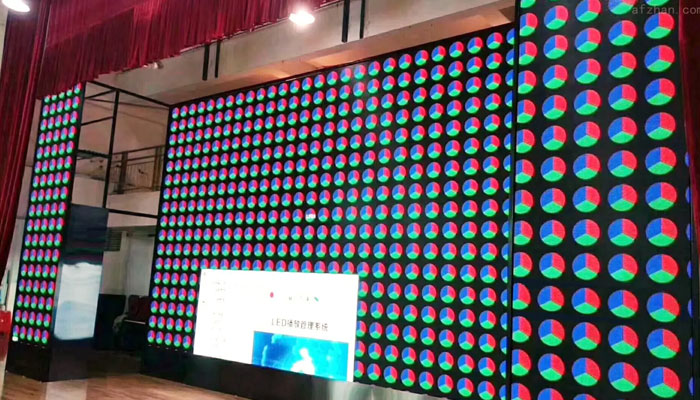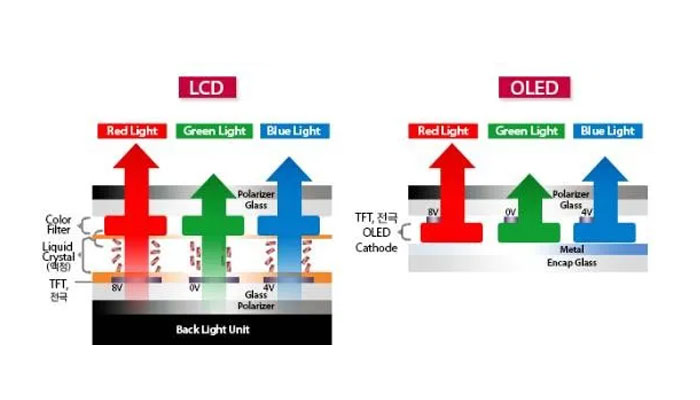
LCD
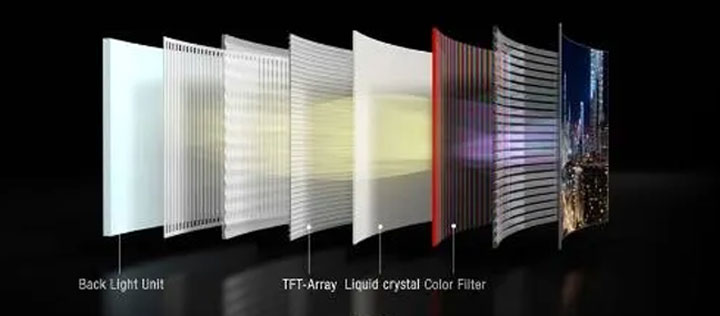
In the LCD display, it is very difficult to completely block the white light and display the black, and there will always be some light leakage, and this is why the true black cannot be displayed on most night scene displays. s reason.
Passive and Active Matrix
LCD displays have been in use since the 1980s and were first used in “portable computers”. These screens have pixels arranged in a “matrix” and are divided into active and passive matrices. Active matrices are more technologically advanced and allow for finer control and faster switching speeds than passive matrices. Active matrix technology was introduced for the first time using a TFT edge-to-edge matrix screen, but more variants have appeared later, but basically the same working principle, and the cost is continuously reduced.
LCD backlight
All LCD displays require some form of white backlight, and backlight technology has continued to improve over time. The purpose of the backlight is to be brighter, more evenly illuminated, and to make the display smaller, thinner and lighter.
LCD screens originally used CCFL backlights, but have now been changed to LED backlights. In addition, some LCD screens have not only used white backlights, but even combined LED backlights of specific colors with white light to achieve some more difficult purposes.
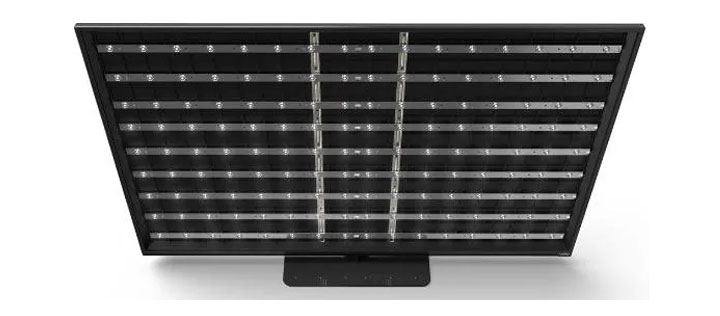
Although the backlight comes from the liquid crystal layer, most of the LED backlight light source comes from the edge of the screen, usually at the border, and this design can make the screen thinner and flatter.
However, TV products usually do not have such high requirements on thickness, so they will also use the overall uniform backlight method, and such light can be more uniform, and the backlight can also be adjusted for local areas.
LCD IPS and PLS
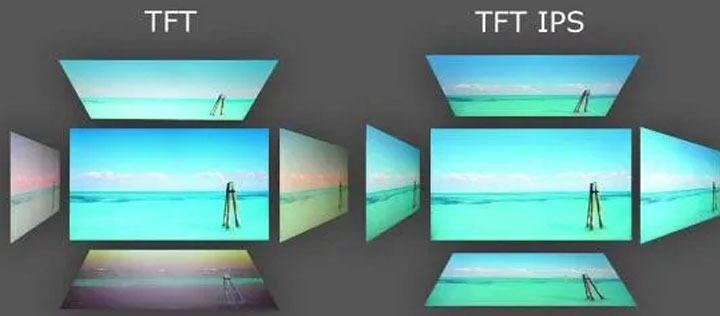
The full name of IPS is In-Plane Switching (also called Super TFT), which is a variant of the LCD display. IPS offers better color accuracy and wider viewing angles. The normal LCD display usually only displays the best fresh fruit directly in front of the screen.
IPS can fully replicate the color effect in a range of 178 degrees without any compromise. And that’s why most touch devices are now using IPS displays. That’s right, when a traditional LCD display is pressed with a finger, there will be a strange effect. I believe everyone has had a similar experience.
At the same time, IPS technology itself has more improved versions, including Super-IPS (S-IPS), Advanced Super IPS (AS-IPS) and IPS-Pro, etc. Although not all IPS panels have the best results, but Overall, IPS is better than traditional LCD panels.
PLS (Plane Line Switching) is also a technology similar to IPS, which is a patent of Samsung. Samsung says this screen has better brightness and more efficient production costs, but it’s not clear yet, because the absolute leader in IPS displays on the market is LG.
+Quantum dots

Quantum dots are a technology that can enhance the color and tint of LCD displays. Semiconductor nanobody quantum dots are capable of absorbing a specific spectrum, often depending on their size. And this property can be exploited/created better colors like red, green and blue which will give the user more saturated colors.
Quantum dot technology has been hot in the market lately, and there is even strength with this latest technology. However, quantum dot technology currently only exists in high-end LCD TVs, but it is believed that it will gradually become popular over time.
OLED screen

OLED stands for Organic Light Emitting Diodes, and each pixel emits light by itself without the need for a separate backlight or color filter. Each OLED pixel can be assigned red, green, and blue colors, and now there are manufacturers who have added yellow, but the principle is the same.
Due to the special properties of OLED, it is not necessary to cover the light source like an LCD when displaying black, and it is only necessary to turn off the pixels and not emit light. And that’s why OLED displays can bring true “blacks”. OLED’s blacks are very deep, contrast is extremely high, and can even produce stunning results when compared to elements such as white.
OLED technology first appeared in the lab in 1987, and it has become a very popular technology in the field of smartphones. Because the OLED screen has one layer less than the LCD screen, the thickness is controlled thinner at a time, which is especially important for mobile devices. For TV products, whether to choose OLED products depends on the preferences of users. However, we do not think that the ultra-thinness of OLEDs is a decisive advantage for LCD TVs.
one-to-one comparison
Due to the difference in basic properties, we can take a look at the direct comparison between the two imaging technologies with different principles to give users a more intuitive feeling.
Black level: OLED wins
The black level refers to how “black” the picture can be when displaying the darkest color. Since technologies such as LCD, DLP or projection rely on filtering or blocking of white light, it is very difficult to display true black. In fact, it can be said that the LCD screen cannot bring true black at all. After all, no matter how good the shading effect is, there will still be some light leakage. On the other hand, due to the principle of self-illumination, OLED can bring true black as long as the light-emitting mechanism is turned off.
Contrast: OLED wins
Contrast refers to the difference between the brightest whites and the deepest blacks, and while LCD has an advantage in brightness (especially in HDR mode), OLED has the deepest blacks. In general, OLED displays generally have higher contrast ratios, as the advantage in black level magnifies this difference.
Viewing angle: OLED wins
Perhaps the best IPS screens can match the viewing angles of OLED displays, but most LCD displays do not perform as well as IPS (especially TVs and smartphones), so with the exception of top-of-the-line IPS displays, Compared with OLED panels, the viewing angle performance of LCD panels is slightly worse. In front of an OLED TV, no matter what angle the audience sits at, they can see the content on the screen with high-quality experience.
Color gamut: OLED wins
From the paper parameters, the advantages of OLED in color gamut are not obvious, mainly due to the introduction of quantum dot technology in LCD panels. Basically the best LG OLED TVs and Samsung’s top quantum-dot LCD TVs are on par in color gamut performance.
But usually only the best LCD TVs are comparable to OLED TVs, so overall color gamut performance is better than OLED.
Brightness level: LCD wins
Since LCD TVs usually use a separate backlight, they generally provide better brightness. In reality, the best LCDs and OLEDs have a difference of about 400NIT in brightness, and overall LCD is better in brightness level. Be aware that higher brightness will make the screen look better outdoors or indoors during the day.
HDR
HDR mode can boost brightness by 1,000 to 10,000 NIT, and HDR-capable OLED TVs are comparable in brightness to LCD TVs. However, some Sony LCD TVs are able to crank up the brightness to 1000 to 1300 NIT, so generally speaking, LCD TVs are brighter.
Color uniformity: OLED wins
The ability to display various colors on a plane in a uniform manner is a very important indicator. Since the backlight of the LCD screen usually comes from the edge, the illumination uniformity is relatively general. If the backlight can be evenly distributed behind the screen, then discrete backlight can bring better results.
OLEDs, on the other hand, are much better at this, since each pixel emits its own light, so there is no need for light source diffusion. In real life, even OLED displays are not completely unified, and even flexible OLEDs appear, but overall they are still better than LCDs.
Power consumption: LCD wins
At the same brightness level, LCD consumes less energy than OLED. This is a problem we have to face. For mobile devices, higher brightness means better visibility outdoors, while products like TVs only need enough brightness during the day.
On the other hand, the power consumption of an OLED panel depends on how many pixels there are, so a higher resolution OLED screen consumes more power.
Cost efficiency: LCD wins
At present, LCD is the lowest cost display method, but OLED technology is constantly being optimized with the continuous progress and the passage of time. The specific cost rate is not yet clear, but the continuous progress of OLED technology in the future will eventually optimize and reduce the cost, and eventually will be comparable to LCD.
Summary: OLED is the best, but still needs development
In general, OLED has a big victory in the parameter comparison of image quality, so the future can be said to be a future development trend. However, OLEDs are still limited by production costs, and the size has also encountered bottlenecks. Unless you have special requirements for a specific parameter such as brightness, OLED is stronger than LCD in most display parameters.
However, the cost is also an aspect that has to be considered. Smartphones are not bad. If a large-sized display device like a TV is used, the price of OLED is almost several times that of LCD. So how to choose depends on your wallet.




